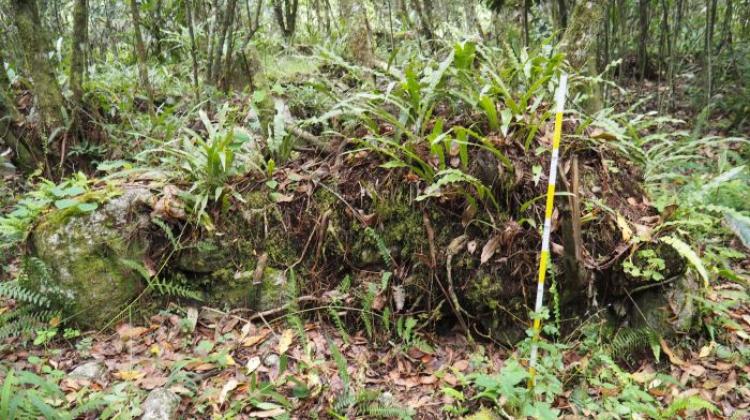Polish archaeologists are exploring a unique ceremonial complex in Machu Picchu
Polish archaeologists are exploring a unique ceremonial complex - a stone altar and the fountains surrounding it - in Chachabamba, in the Machu Picchu National Park in Peru. The complex functioned from the beginning of the 15th century.
The greater part of the archaeological site of Chachabamba is covered by tropical forest - this area has not been excavated. The so-called ceremonial sector is best known and partially reconstructed. Its centre was a large boulder with carved altars, stairs, and even a groove, through which offered liquids would flow, possibly drinks or blood of animals.
In front of the boulder there was a small square with ceremonial buildings on the sides, surrounded by a dozen or so fountains used by the local elite for ablutions (ritual washing of the body). Fountains, as they are called by archaeologists, are made of stone blocks and resemble small pools. Archaeologists have determined that the complex began to function in the early 15th century.
"Water always flowed through them, because according to Inca beliefs, only flowing water had the power to wash away sins" - says the head of the Centre for Andean Studies at the University of Warsaw in Cusco, Prof. Mariusz Ziółkowski.
Archaeologists have conducted excavations of a complex system of canals that supplied water to the pools. "It was a very advanced solution, because the pools were not in one line, like in other well-known sites in the area. Over time, the complex was expanded and the course of the water supply channels was changed" - adds Dominika Sieczkowska, PhD student at the Centre for Andean Studies of the University of Warsaw in Cusco, head of Polish excavations at Chachabamba. Research is carried out in cooperation with the Peruvian Ministry of Culture.
Water was supplied to the ceremonial complex by means of a system made of stone blocks, which partially ran underground. The source of water was a nearby waterfall. After passing through the ceremonial centre, thanks to a similar drainage system, water flowed to the river in the valley.
Fragments of delicate and decorated ceramic vessels have been found during the excavations. According to archaeologists, this indicates that the pools did not have a utilitarian purpose (for example, they did not serve as water holes). "Such vessels were not used every day" - argues Sieczkowska.
Asked about the circumstances, in which the bathhouse was used, Prof. Ziółkowski says that in the main ceremonies of the Inca calendar, it was extremely important to cleanse the sins by washing the whole body. After this act, one had to discard old clothes and wear new clothes.
"The first contact of Europeans - conquistadors - with the representative of the highest Inca authority took place in a very similar ceremonial complex. The Spaniards were granted an audience with Atahuallpa, a pretender to the Inca throne, while he was performing ritual ablutions in the Conoc baths near Cajamarca" - Ziółkowski recounts.
Machu Picchu National Park covers over 36 thousand ha. Within its borders there are about 60 archaeological sites, many of which have not yet been studied due to difficult access and dense vegetation. The Polish expedition is currently conducting excavations in the area under an agreement concluded with the Park`s director, anthropologist Fernando Astete Victoria. The research is co-financed by the Polish National Science Centre and the Peruvian Ministry of Culture.
PAP - Science in Poland, Szymon Zdziebłowski
szz/ zan/ kap/
tr. RL
Przed dodaniem komentarza prosimy o zapoznanie z Regulaminem forum serwisu Nauka w Polsce.
















